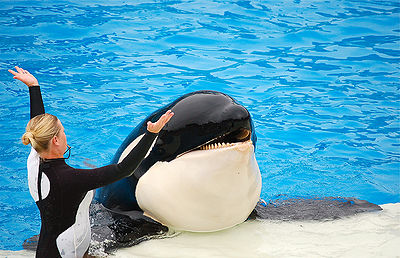Dolphin Tale is a movie based on a true story. It stars Harry Connick, Jr., Ashley Judd, Nathan Gamble, Cozi Zuehlsdorff, Kris Kristofferson, and Oscar winner Morgan Freeman.
The film focuses on the friendship between a boy named Sawyer and a dolphin who lost his tail in a crab trap. Sawyer is on the beach when the dolphin washes ashore. A marine hospital takes the dolphin in, naming her Winter. Sawyer and the staff at the hospital care for Winter, even developing a prosthetic tail for her so she can swim properly. When the marine hospital is threatened with closure due to budget problems, Sawyer and his friends use Winter’s story to raise money to keep the place open. The hospital then uses Winter for therapy for the handicapped, who relate to her story.
The American Humane Association worked with filmmakers to ensure the welfare of Winter and the other animal performers. Richard Ingber stated in the press notes, “One thing we knew going in was that Winter is not an actor. She is not a captive animal that is trained to perform. She’s been through so much in her life already, so we had to be respectful of that and of her.”
Some animal welfare groups are arguing that Winter should have been kept in a natural oceanic environment, not the theme park-style “dolphinarium” she is currently living in. Others say that the Clearwater Marine Aquarium is simply trying to profit off Winter, and for these reasons some people are boycotting the film.
Dolphin Tale – Official Trailer
Man-made dangers to dolphins
Every year thousands of dolphins die from getting tangled up in crab traps. Modern fishing fleets don’t discriminate between fish and marine animals. Nets and traps are set out in increasing numbers, and catch whichever animals are unfortunate enough to get stuck. Another danger to dolphins is pollution in the water. When the fish the dolphins consume are polluted, the dolphins’ immune system will become seriously damaged. Dolphins are also disoriented by loud noises caused by activities like oil drilling and ships’ engines. They can become disoriented and injure themselves as a result. Collisions with ships and rotor blades are also common.
Another source of danger to dolphins is captivity. Due to their great intelligence, dolphins make an “ideal” animal for the entertainment industry to exploit. However, dolphins are meant to swim in the great expanses of the ocean and do not do well in captivity.
According to the Captivity Fact Sheet (Dolphin Project Europe, 1996):
- 53% of those dolphins who survive the violent capture die within 90 days.
- The average life span of a dolphin in the wild is 45 years; yet half of all captured dolphins die within their first two years of captivity. The survivors last an average of only 5 years in captivity.
- Every seven years, half of all dolphins in captivity die from capture shock, pneumonia, intestinal disease, ulcers, chlorine poisoning, and other stress-related illnesses. To the captive dolphin industry, these facts are accepted as routine operating expenses.
The Whale and Dolphin Conservation Society (WDCS) works to protect dolphins from all of these dangers and to conserve those species threatened with extinction.



